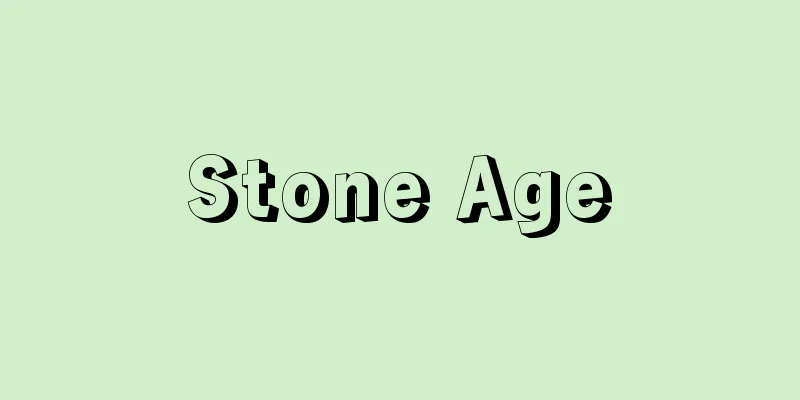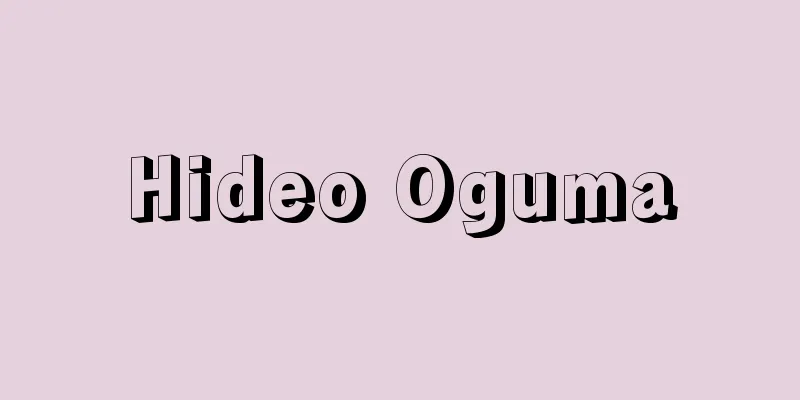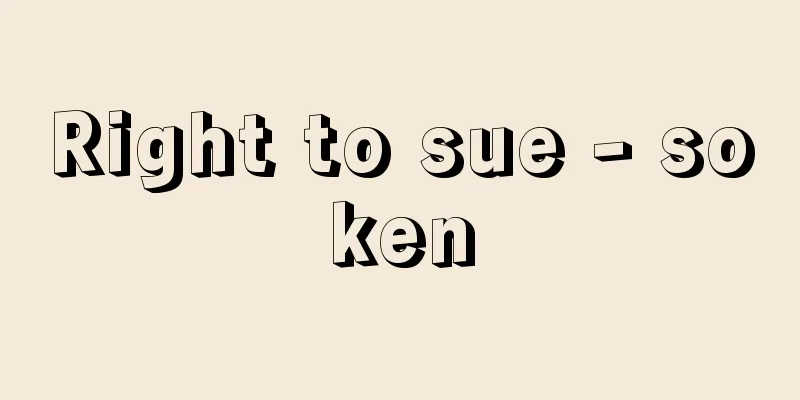Stone Age

|
One of the three ages proposed by the Danish author Thomsen. It refers to the period when stone was used exclusively for making tools, and copper, bronze, and iron had not yet been used (in English, the stone age, in German, and in Danish, stenalder). More precisely, it should be defined as the period when humans did not yet know about metallurgy. Since metallurgy was not known, tools and other implements were mainly made of stone, but even if they were made of wood or bones and horns under certain circumstances, it would still be the Stone Age. The majority of human history corresponds to the Stone Age, which spans almost 2 million years. Archaeologists call the period when stone tools were made exclusively by the chipping method and polishing was unknown the Paleolithic period, the period when polishing and pounding methods were known the Neolithic period, and the transitional period in between the two the Mesolithic period. Some people are still stuck in the Stone Age in New Guinea and the Andaman Islands, but in the Old World the Stone Age began to come to an end around 3000 BC. The indigenous people of America before Columbus were also stuck in the Stone Age, except in the Andes and parts of Central America. The Stone Age is a period based on the history of technology, based on the presence or absence of metallurgy. Therefore, it has no direct relation to the form of subsistence, but throughout most of the Stone Age, humans lived by an acquisition economy of hunting and gathering. Only some Neolithic people in developed regions made a living by farming and raising livestock. [Fumiei Tsunoda] “Ancient Studies Introduction” by Fumie Tsunoda (1972, Yamakawa Publishing)” [Reference items] | | |Source: Shogakukan Encyclopedia Nipponica About Encyclopedia Nipponica Information | Legend |
|
デンマークのトムセンが提唱した三時代法による時代の一つ。利器の材料にもっぱら石が使用され、まだ銅、青銅、鉄が利器の材料に用いられぬ時代をいう(英語ではstone age、ドイツ語ではSteinzeit、デンマーク語ではstenalder)。より厳密には、人間がまだ冶金(やきん)術を知らなかった時代と規定すべきである。冶金術が知られていないから、利器その他の器具はおもに石でつくられはしたが、ある種の事情の下でそれらが木材でつくられても、あるいは骨角でつくられても、石器時代であることには変わりはない。 人間の歴史の大部分は石器時代に該当し、ほとんど200万年にわたっている。考古学者は、石器がもっぱら打剥(だはく)法によってつくられ、磨製法が知られていない時代を旧石器時代、石器の製作に磨製法、喙敲(かいこう)法が知られた時代を新石器時代とよび、またその中間の過渡的時代を中石器時代と称することもある。ニューギニアやアンダマン島などには、いまなお石器時代に停滞する人々もいるが、旧大陸では紀元前3000年ころから石器時代は終わりを告げ始めている。またコロンブス以前のアメリカの原住民も、アンデス地帯や中米の一部を除いては、石器時代に停滞していた。 石器時代というのは、冶金術の有無に基づいた技術史的な時代区分による時代である。したがって生業の形態とは直接関係はないが、石器時代の大部分を通じて人間は狩猟採集という獲得経済に生きていた。農耕、牧畜を生業としたのは先進地域における一部の新石器時代人であった。 [角田文衛] 『角田文衛著『古代学序説』(1972・山川出版社)』 [参照項目] | | |出典 小学館 日本大百科全書(ニッポニカ)日本大百科全書(ニッポニカ)について 情報 | 凡例 |
<<: Red legged child - Sekkyakushi
Recommend
Adult Yagoro - O-hito Yagoro
He is the protagonist of a giant legend told mainl...
Umbilical cord
Umbilical cord. Umbilical cord blood is, as the na...
Guanahani [island] - Guanahani
…Moreover, Pierre d'Ailly's Imago mundi, ...
Osijek (English spelling)
Osijek is a city in the Slavonia region in northea...
Death from traumatic shock
...Toxic shock death occurs when a person is pois...
Teotihuacan
…The culture that had a great influence on variou...
Electricity
These maps were created when the land distributio...
Cycling - cycling
Any sport played using bicycles. There are variou...
Brill, Paul
Born: 1554. Antwerp Died: October 7, 1626. A Flemi...
Yen trend - Ensei
Year of death: 21st February 1135 (5th February 11...
Paleosoil - Kodojo
Soil that was formed in geologically ancient time...
Ben Badis (English spelling)
... The Algerian national movement developed thro...
National Medical Examination - Ishikokashiken
The term "medical doctor" refers to a me...
Kanyoka
…They emphasized that if one places special impor...
Nithart, MG (English spelling) NithartMG
…He is one of the most important German Renaissan...









